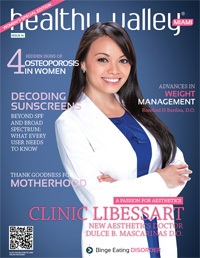Does anyone still remember the days when buying a sunscreen was as easy as picking one with the desired protection number on the bottle and then confirming with a quick sniff that it had a pleasant smell, typically coconut or some other sweet tropical fruit? Well, those days are long gone. Now choosing a sunscreen is more complicated and time-consuming than learning the new technology that is offered with each Apple product upgrade. How many of us have stood in the sunscreen aisle at our local pharmacy bewildered by the sheer volume of choices of sun protection? UVA? UVB? Broad spectrum? SPF 30 or should I buy SPF 60? Physical versus chemical sunscreen? PABA-free? Aerosol versus cream? These are the many choices we are presented with that challenge the consumer who simply wants to buy a product that protects them from getting sunburned and won’t sting their eyes.
Here to help us decipher our options and decode the cryptic numbers, capital letters and sunscreen ingredients is nationally-renowned photobiologist, Curtis Cole, PhD. Dr. Cole is a leading industry authority and former Vice President of Research and Development at Johnson & Johnson where he was instrumental in developing sunscreens for Neutrogena. In my interview with him below, we will learn the fundamental science and practical guidelines for applying sunscreen and for protecting our skin as we all live and enjoy the beautiful Florida lifestyle.
Q: SPF 30 versus SPF 60 versus SPF 100? We know that the current guidelines of the American Academy of Dermatology are to use a minimum of SPF 30 everyday. Please educate us on what the higher numbers mean. Should we choose the highest number possible?
A: Higher SPF sunscreens really do offer more protection, and help to compensate for under-application of product. For typical days when you only have incidental sun exposure, an SPF 30 broad spectrum should be sufficient for most everyone. But if you are spending several hours or more outside, go for SPF 50 and higher, broad spectrum. For extreme situations – all day outside, at the beach or high in the mountains, get the highest SPF on the shelf and reapply during the day.
Q: Physical versus Chemical Sunscreen? As you know, we now live in a “green” culture that favors products that are natural, organic and chemical-free. What are you thoughts about physical versus chemical sunscreens? Is one type more protective than the other? Is one type more toxic? Lastly, should we be concerned about the ingredient PABA and use only PABA-free products?
A: Actually the “chemical” sunscreens can provide higher protection than the “physical” or “mineral” sunscreens, and are much more pleasant to use, and are therefore more likely to be applied at a higher application dose. “Physical” sunscreens, such as titanium dioxide and zinc oxide, actually work the same way as chemical sunscreens to absorb the sun’s UV photons and change the energy into harmless visible light or heat energy. They do provide a good alternative to chemical sunscreens for individuals that may be sensitive to the chemical UV filters and especially for children. Both types of UV filters are very safe. PABA was one of the very earliest sunscreens used, and was discovered in the early 1980’s to have potential as a contact allergen, and was dropped from use by virtually all of the industry. I’m not aware of any commercial sunscreens containing this ingredient today.
Q: Do any sunscreens provide all day protection? Many of us are diligent and put our sunscreen on in the morning before we go outside but for how long are we really protected? And when do we need to reapply?
A: As long as the sunscreen you are using is photostable, it will continue to protect you as long as it is on your skin. The UV filters in the sunscreens do not “wear out” but continue to absorb the sun’s UV rays until you rub, swim, or wipe it off. It’s always good to reapply at least once to be sure you have put on a sufficient amount, and to hit those areas that you may have missed on your first application. Always reapply after swimming or toweling off to maintain and effective level of protection. FDA labeling mandates instructions to reapply every 2 hours.
Q: Should we worry that sunscreens are preventing us from obtaining adequate Vitamin D? It is widely understood that adequate levels of Vitamin D are necessary for optimal health and that low levels of Vitamin D have been associated with colon cancer, breast cancer, lung cancer and prostate cancer. Since the skin is an important source for obtaining Vitamin D, should we be concerned that our sunscreens are causing many of us to have low Vitamin D levels and thereby put us at risk for developing these types of cancer?
A: Unfortunately, the exact wavelengths of sunlight that produce Vitamin D in the body are exactly the same ones responsible for sunburn and squamous cell skin cancer. With modern effective Vitamin D supplements available, we now can have the best of both worlds – avoid painful sunburns, help prevent skin cancers and skin photoaging, AND maintain healthy Vitamin D levels with oral supplements. Trying to maintain Vitamin D levels with sun exposure is like playing with fire.
Q: Any special recommendations for what to use on children? Are there certain products that we should avoid using on children? Also, is it true that we shouldn’t put sunscreen on children who are younger than 6 months old?
A: All of the sunscreen filters used in today’s sunscreen products have been extensively tested and used globally for many years. Because there is a larger surface area to volume ratio for children there is heightened emphasis on safety for topical products. If parents are concerned about safety of sunscreens on their children, then I would recommend they use a physical or “mineral” sunscreen on them as they have been shown to have no detectable UV filter penetration into the skin – even the “nano” mineral filters. Children less than 6 months of age should be kept out of direct sunlight if at all possible, and if not possible, use a mineral sunscreen on them and cover them as much as possible with clothing, hat, and shade.
Q: Aerosol versus cream? Are they equally effective?
A: When applied correctly, they are equal, but people are often are applying the “spray” products incorrectly. The secret to effective sunscreen application is to create a uniform coating of sunscreen across the entire surface. To do this with a spray product, you need to spray it onto the skin until it is glistening wet and then gently spread by hand to be sure you have an even coating. Waving the mist over the skin is certainly not adequate, and trying to apply a spray standing on the beach in the wind is literally throwing your money away. If in doubt, spray it into your hand, and then apply it by hand.
Q: Rub versus spread? What is the most effective way to put our sunscreen on?
A: SPREAD IT, don’t “rub” it. Again, the secret is to form a uniform film on the surface of the skin. Prolonged rubbing only wipes the sunscreen off onto your hand. Use your hand to gently spread the sunscreen over the surface of the skin so it is evenly distributed, and then let it alone – don’t try to rub it to make the “white” go away, it will go away as the water or alcohol evaporates and it will form it’s own uniform film that will be the most effective protection.
Q: In 2012, the FDA required changes to sunscreen labels. What has changed? Are there any new warnings or important consumer messages on the bottles? Is the new labeling more consumer-friendly?
A: Most of the sunscreen product formulae were unchanged following the 2012 FDA sunscreen monograph implementation. The new labeling provides the technical “drug facts” information into a prescribed uniform format on the back of the package, consistent with all other OTC drug products. Products with SPF 15 and higher and that are “broad spectrum” may make claims that the product can help reduce the risk of skin cancer and early skin aging. Products with SPF less than 15 or are not “broad spectrum” have to display a “negative claim” that the product has been demonstrated to only prevent sunburn, and that UV exposure from the sun increases the risk of skin cancer, premature skin aging and other skin damage.
View the full article Decoding Sunscreens.






